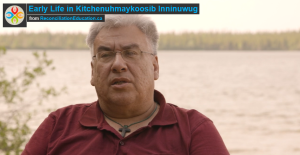In the early 2010’s, I read Ken Bain’s “What the Best College Teachers Do” (2004). One part jumped out at me then and I continue to quote and use it over and over. When describing the best college teachers’ classrooms, Bain writes
More than anything else, the best teachers try to create a natural critical learning environment: natural because students encounter skills, habits, attitudes, and information they are trying to learn embedded in questions and tasks they find fascinating – authentic tasks that arouse curiosity and become intrinsically interesting, critical because students learn to think critically, to reason from evidence, to examine the quality of their reasoning using a variety of intellectual standards, to make improvements while thinking, and to ask probing and insightful questions about the thinking of other people.
(p. 99)
He observes that in these natural, critical learning environments,
students encounter safe yet challenging conditions in which they can try, fail, receive feedback, and try again without facing a summative evaluation.
(p. 108)
The try, fail, receive feedback, try again cycle inspired me to create this graphic (feel free to use it, it’s shared under CC-BY):

I frequently think about this learning cycle and happily encourage instructors and other educational developers to think about it, too, and build it into their courses and support for those who teach. In other words, it’s always active in my head, always ready to leap up and join the conversation.
Imagine my thrill, then, when I read this passage from Pulling Together: A Guide for Indigenization of Post-Secondary Institutions (Curriculum Developers edition) by Asma-na-hi Antoine, Rachel Mason, Roberta Mason, Sophia Palahicky, and Carmen Rodriguez de France (2018):
[L]earning from mistakes is a common aspect of Indigenous pedagogy, as it involves experiential learning and self-development. In this view, mistakes plus correction equals learning. Indigenous communities and families have a cultural process for “fixing” a mistake by creating a safe place to acknowledge your mistake, to fix it, and then learn from it…After the process of acknowledging and fixing a mistake, it’s then time to let go, move forward, and continue to work together.
(p. 34)
? Mind ? Blown ?
Let’s take a close read to compare these Western and Indigenous approaches to teaching:
| What the best college teachers do | Pulling Together |
|---|---|
| students encounter skills, habits, and information they are trying to learn embedded in questions and (authentic) tasks they find fascinating | it involves experiential learning and self-development |
| students encounter safe yet challenging conditions | creating a safe place to acknowledge your mistake |
| try, fail, receive feedback, and try again | mistakes plus correction equals learning |
| try, fail, receive feedback, and try again | acknowledge your mistake, to fix it, and then learn from it |
| without facing a summative evaluation | it’s then time to let go, move forward, and continue to work together |
I’m so happy to continue confronting and correcting my colonial misconception that Indigenizing the curriculum means setting aside my Western knowledge and practices. How people learn is the same, and effective teaching is effective teaching, however we label and categorize it.


